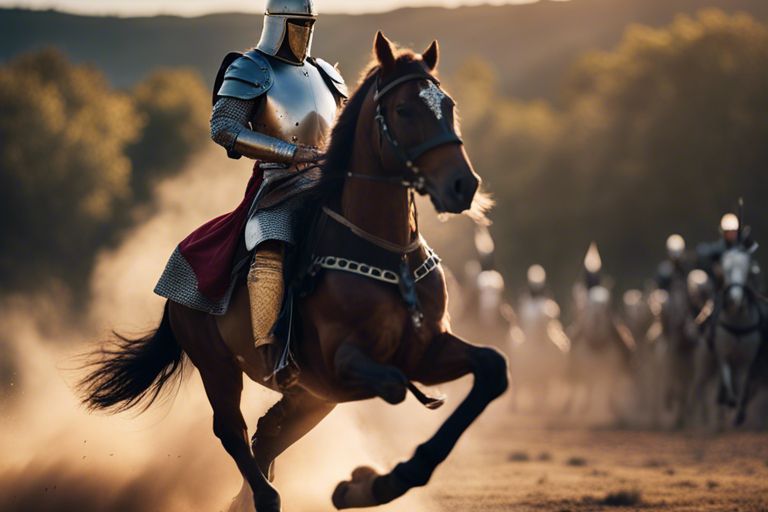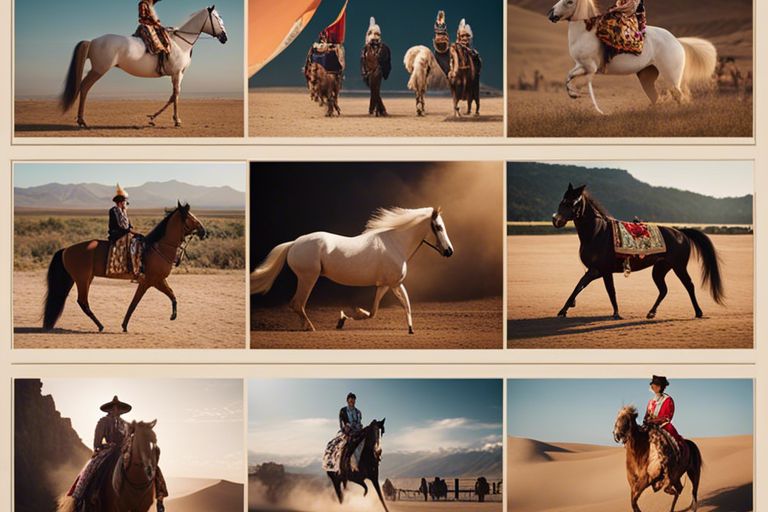There’s a majestic and formidable presence on ancient battlefields — it’s the horse. In historical warfare, these magnificent creatures were not merely animals but powerful weapons. From the thundering charge of cavalry to the swift transport of messengers, horses played a critical role in the outcomes of battles. Join us as we investigate into the importance of horses in ancient conflicts, exploring how they shaped the course of history with their strength, speed, and agility.
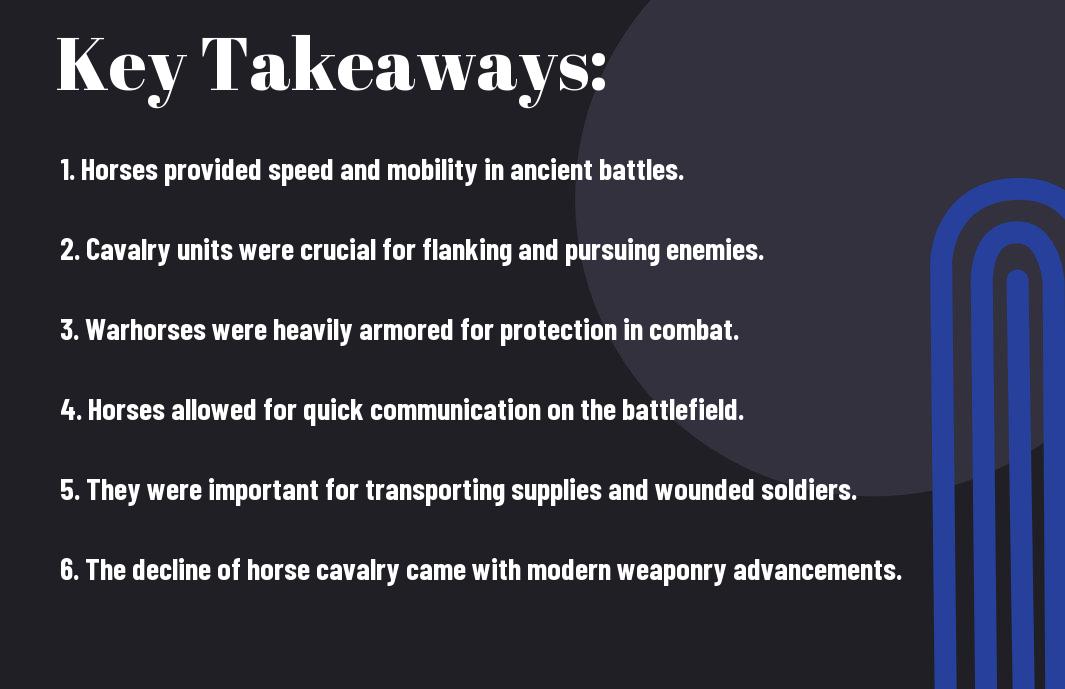
Ancient Civilizations
The Early Use of Horses in Warfare
Horses have played a crucial role in warfare since ancient times. In the early periods of civilization, horses were harnessed and ridden into battle by skilled warriors. The mobility and speed that horses offered on the battlefield provided a significant advantage in conflicts. As civilizations advanced, the strategic importance of horses in warfare became increasingly evident.
Horse-Drawn Chariots in Ancient Mesopotamia and Egypt
The horse-drawn chariot revolutionized warfare in ancient Mesopotamia and Egypt. These lightweight yet formidable vehicles were used for both transportation and combat. The speed and agility of chariots enabled armies to swiftly maneuver on the battlefield, making them a formidable force. The iconic image of a chariot racing across the battlefield with archers raining down arrows on the enemy was a sight to behold.
Ancient civilizations in Mesopotamia and Egypt relied heavily on chariots for their military campaigns. The chariot was a symbol of power and prowess in warfare, often associated with elite warriors and nobility. Its presence on the battlefield struck fear into the hearts of enemies, as the swift and deadly chariot charges could turn the tide of a battle in an instant.
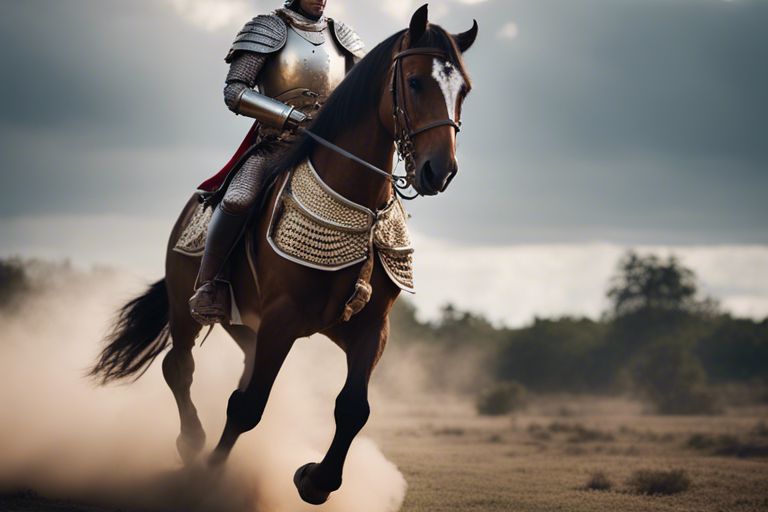
The Rise of Cavalry
Little did ancient civilizations know that the domestication of horses would revolutionize warfare forever. With the rise of cavalry, battles were transformed, and the speed, agility, and power of these majestic animals became indispensable on the battlefield.
The Development of Horse Breeding and Training
Horse breeding and training techniques advanced significantly as civilizations recognized the need for stronger, swifter steeds. Selective breeding led to the creation of larger, more durable war horses capable of carrying heavily armored riders. Training methods improved, resulting in disciplined and agile mounts that could execute complex maneuvers in battle.
The Introduction of Stirrups and Their Impact on Warfare
Stirrups revolutionized mounted warfare by providing riders with stability, balance, and control over their horses. This simple yet ingenious invention allowed cavalry soldiers to wield weapons more effectively, charge with greater force, and withstand the impact of melee combat. The introduction of stirrups was a game-changer in historical warfare, shaping the tactics and outcomes of battles for centuries to come.
Medieval Warfare
The Role of Knights and Their Horses
Keep in mind that in medieval warfare, knights and their horses played a crucial role in battle. The armored knights, mounted on powerful warhorses, were the elite warriors of the time. The combination of a heavily armored knight and a well-trained warhorse was a formidable force on the battlefield. The speed and agility of the horse allowed the knight to maneuver quickly and decisively, while the armor provided protection and intimidation.
The Use of Horses in Siege Warfare
Horses were also instrumental in siege warfare during the medieval period. When a castle or fortified city was under siege, horses were used to transport supplies, equipment, and troops to and from the battlefield. **Their strength and endurance** made them indispensable in maintaining the siege lines and carrying out strategic maneuvers. Additionally, horses were often used to **intimidate the enemy** by parading them outside the walls of the besieged stronghold, creating a sense of fear and urgency among the defenders.
It is important to note that **horses were vulnerable targets** during siege warfare. The enemy would try to target the horses to disrupt the supply lines and create chaos among the besieging forces. Protecting the horses became a priority for both the attackers and the defenders, as their **loss could severely impact the outcome** of the siege.
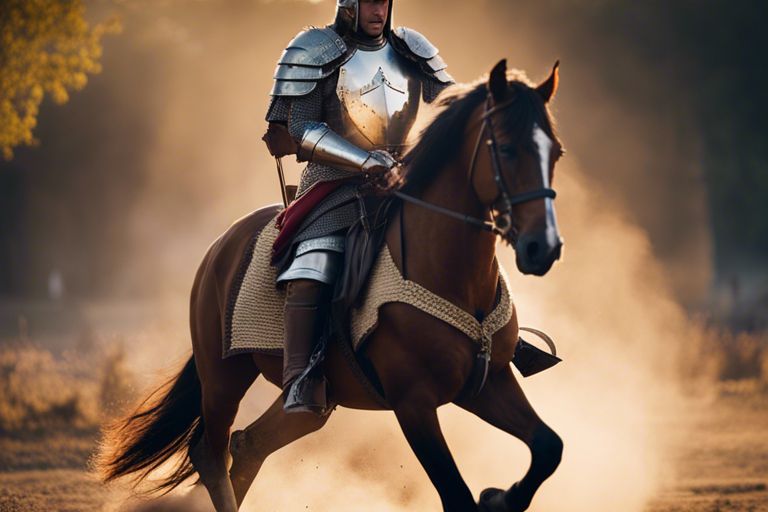
The Age of Gunpowder
The Decline of Cavalry in the Face of Firearms
Firearms revolutionized warfare during the Age of Gunpowder, leading to a significant decline in the effectiveness of cavalry units on the battlefield. The introduction of firearms such as muskets and cannons changed the dynamics of warfare, making traditional cavalry charges vulnerable to the long-range attacks of firearms. Your once dominant role as a cavalry soldier was challenged as infantry armed with guns became more prevalent and deadly.
The Adaptation of Horses to New Forms of Warfare
One of the ways horses adapted to the changing nature of warfare during the Age of Gunpowder was by being trained to remain calm and steady in the face of loud gunshots and explosions. Your steed had to be conditioned to the sights and sounds of battle, ensuring that it would not panic and throw you off during the chaos of combat. Horses were also used to transport artillery pieces, supplies, and soldiers across the battlefield, playing a crucial role in the logistics of war.
Understanding the importance of horses in both traditional cavalry charges and in the transportation of soldiers and equipment highlights their critical role in historical warfare. While the advent of firearms fundamentally changed the way battles were fought, horses remained invaluable assets on the battlefield, adapting to new forms of combat and continuing to serve vital functions in warfare.
The Role of Horses in Historical Warfare: Napoleonic Wars and the Rise of Modern Cavalry
Now, let us probe into the Napoleonic Wars, a period where the strategic use of cavalry played a pivotal role in shaping the outcome of battles. During this era, the French Army under Napoleon Bonaparte revolutionized military tactics by incorporating **modern cavalry units**. These cavalry units were no longer just heavily armored knights charging into battle but rather **swift and versatile horsemen armed with firearms**. The French Hussars and Chasseurs à Cheval were known for their speed, agility, and effectiveness in reconnaissance missions, harassment of enemy flanks, and pursuit of fleeing foes.
The Revival of Cavalry Tactics
Revival of cavalry tactics during the Napoleonic Wars marked a significant shift in the way wars were fought. The French cavalry units, such as the famous Cuirassiers and Dragoons, became instrumental in Napoleon’s military successes across Europe. With their **speed and mobility**, these mounted soldiers could quickly exploit weaknesses in the enemy’s formations, striking deep into their lines and creating chaos and confusion.
**Cavalry charges** were often decisive moments in battles, as the shock and awe of a mounted assault could break enemy formations and turn the tide of the conflict. The ability of cavalry to swiftly maneuver on the battlefield gave commanders a powerful tool to outflank, outmaneuver, and outpace their adversaries.
The Importance of Horses in Logistics and Supply
Logistics played a crucial role in the success of any military campaign during the Napoleonic era. **Horses were indispensable** for transporting supplies, artillery pieces, and wounded soldiers. Without these **hardy and dependable animals**, the rapid movement of troops and equipment over long distances would have been impossible.
**Cavalry units also relied heavily on horses for their mobility**. Horses enabled cavalrymen to cover vast distances, engage in fast-paced pursuits, and conduct lightning-fast raids behind enemy lines. The ability to swiftly deploy and redeploy cavalry forces gave commanders a strategic advantage in maneuvering on the battlefield.
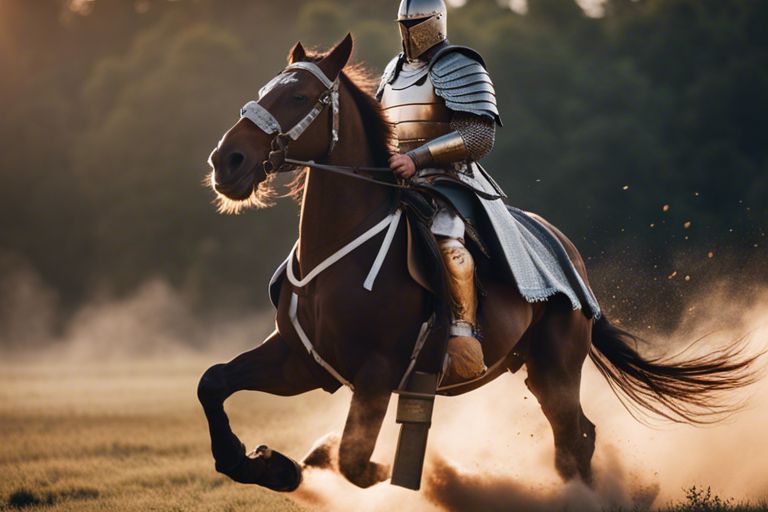
The American Civil War and the Advent of Mechanized Warfare
The Use of Horses in the Confederate and Union Armies
Not only did the American Civil War witness some of the most brutal battles in history, but it also marked a significant shift in the way warfare was conducted. Despite the increasing use of early forms of mechanized transportation such as trains, horses continued to play a crucial role on the battlefield. In both the Confederate and Union Armies, horses were important for reconnaissance, cavalry charges, and the movement of artillery.
The Introduction of Railroads and Their Impact on Horse-Drawn Transportation
On the other hand, the introduction of railroads during the American Civil War revolutionized transportation for soldiers and supplies. **Railroads significantly increased the speed and efficiency of moving troops and equipment across long distances**, reducing the reliance on traditional horse-drawn wagons. This development had a profound impact on the logistics of warfare, allowing for quicker mobilization and deployment of forces.
The Introduction of Railroads and Their Impact on Horse-Drawn Transportation
Introduction: **Railroads not only transformed the logistics of war during the American Civil War but also posed new challenges for traditional horse-drawn transportation. The vast network of railroads created a more efficient means of moving troops and supplies, but it also posed dangers due to the increased speed and volume of traffic on the tracks. Additionally, the loud, unpredictable nature of trains could startle horses, leading to potential accidents and logistical setbacks on the battlefield**.
Final Words
Conclusively, the role of horses in historical warfare cannot be understated. From their use in ancient civilizations to their evolution into esteemed cavalry in medieval times, horses have played a crucial role in shaping the outcomes of battles and wars throughout history. Their speed, strength, and agility made them invaluable assets on the battlefield, providing soldiers with a significant advantage over their enemies. As you reflect on the significant impact of horses in historical warfare, remember the countless battles that were won or lost based on the presence and strategic deployment of these majestic creatures.
Q: What role did horses play in historical warfare?
A: Horses were crucial in historical warfare for their speed, agility, and strength, allowing soldiers to maneuver quickly on the battlefield, charge at enemy lines, and carry supplies and equipment.
Q: How were horses trained for battle in ancient times?
A: Horses were trained for battle through rigorous conditioning, exposure to loud noises and chaotic environments, and learning to obey the commands of their riders amidst the chaos of combat.
Q: What types of horse-mounted soldiers existed in historical warfare?
A: In historical warfare, there were various types of horse-mounted soldiers, including cavalry, dragoons, and horse archers, each with their specialized roles and tactics on the battlefield.
Q: How were horses protected in battle?
A: Horses were often protected in battle with armor, such as barding for their bodies and helmets for their heads, to shield them from enemy weapons and projectiles.
Q: What impact did the use of horses have on the outcomes of historical battles?
A: The use of horses in historical warfare often had a significant impact on the outcomes of battles, as they provided crucial mobility, shock value, and logistical support that could turn the tide in favor of the side with superior cavalry forces.
